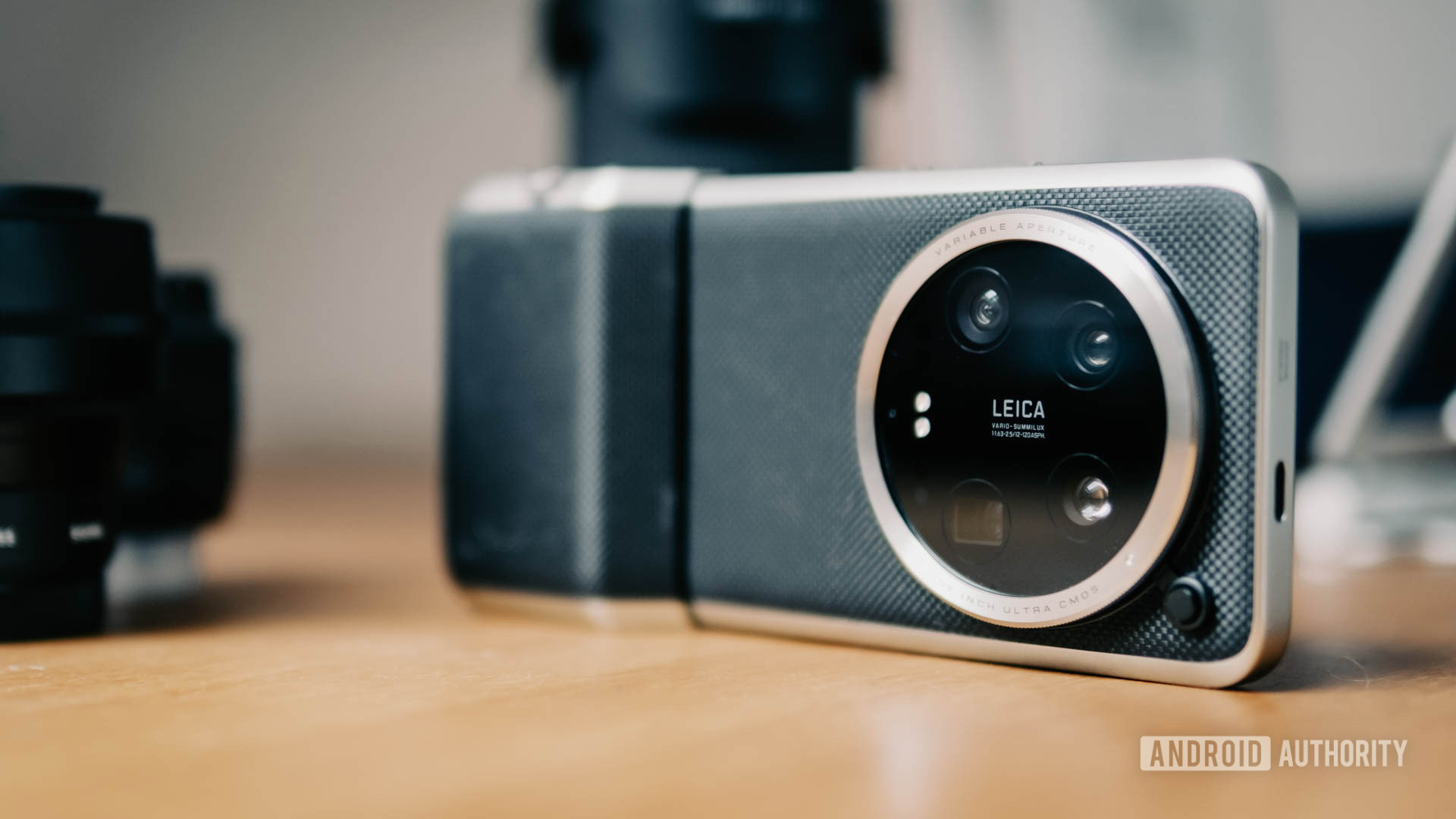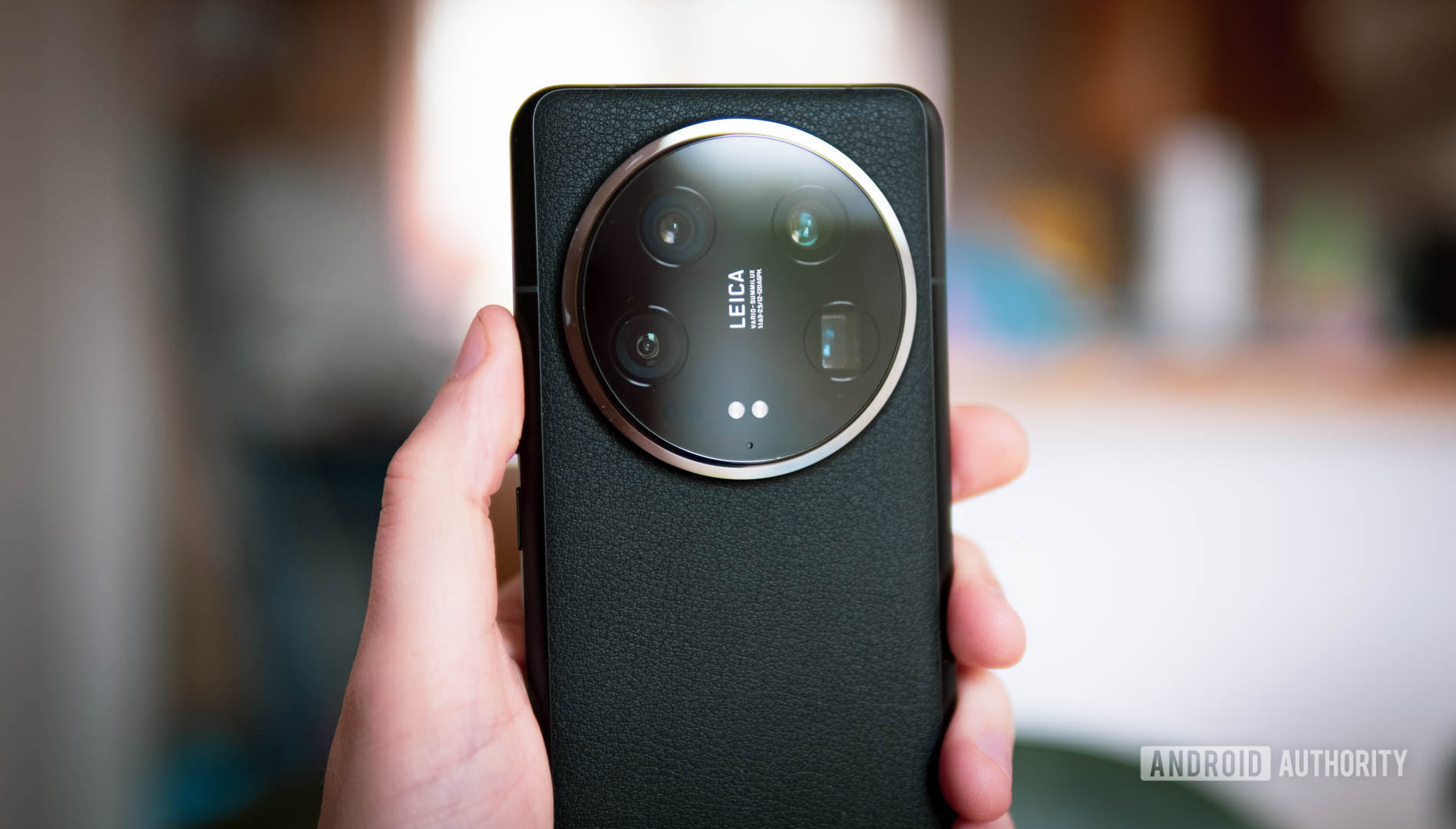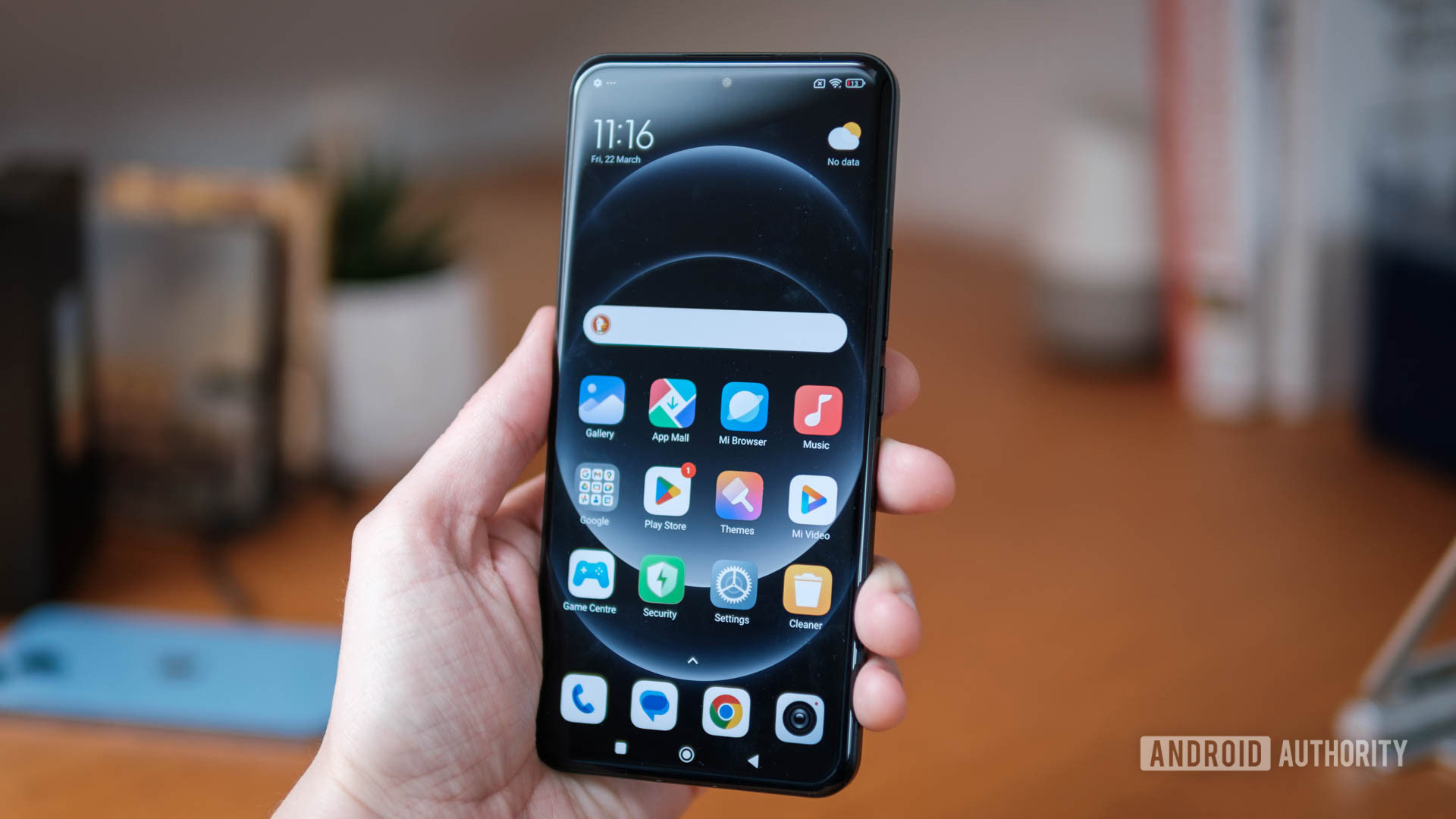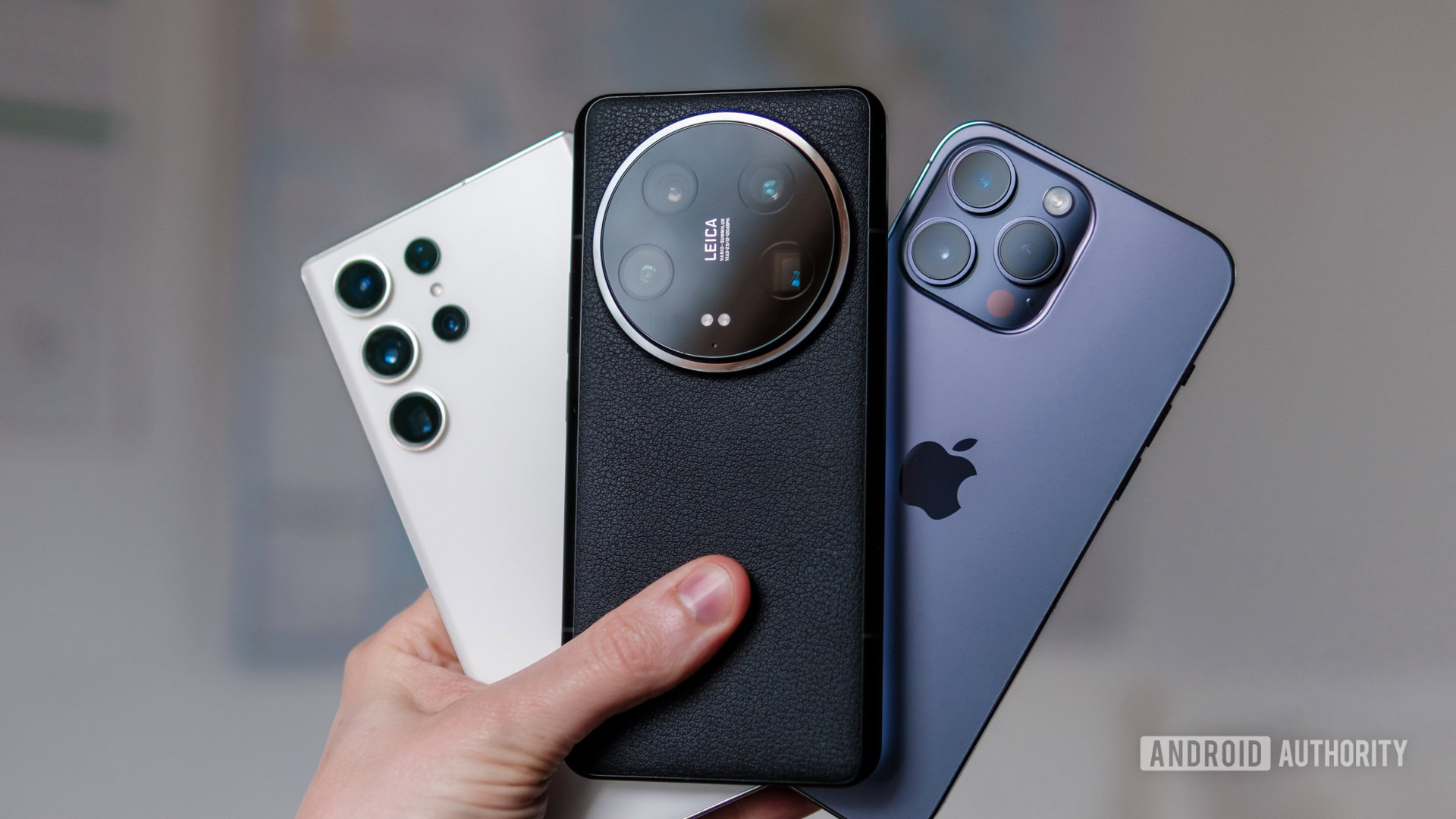Affiliate links on Android Authority may earn us a commission. Learn more.



Xiaomi 14 Ultra
MSRP: $1,631.00
What we like
What we don't like

Xiaomi 14 Ultra
Xiaomi 14 Ultra review: At a glance
- What is it? The Xiaomi 14 Ultra represents the best in mobile technology from one of China's top brands. Just like its predecessor, the phone's photography-heavy focus and all-out approach to specifications come with a hefty price tag. It's firmly an enthusiast rather than a mainstream handset, but it's quite a technological marvel that sets it up as one of the best smartphones money can buy.
- What is the price? The Xiaomi 14 Ultra can be yours for £1,299 (~$1,631) / €1,499 with 16GB RAM and 512GB storage, the only variant available outside of China.
- Where can you buy it? Xiaomi isn't releasing its latest flagship in the US, but it is heading to the UK and select European markets (as well as its home turf in China). You can buy the phone directly from Xiaomi's Mi store and Amazon.
- How did we test it? I tested the Xiaomi 14 Ultra for five days. The review unit was supplied by Xiaomi.
- Is it worth it? From sumptuous portraits to vibrant low-light snaps, the Xiaomi 14 Ultra delivers on the promise of one of the best camera phones money can buy. Top-of-the-line specs don't end there, with a brilliant display, snappy performance, and lightning charging onboard too. Xiaomi chargexias a steep price for all this kit, which keeps the 14 Ultra firmly at the enthusiast end of the market, but if you want an "Ultra phone" not made by Samsung, then Xiaomi's behemoth is worth a look.
Xiaomi 14 Ultra camera review

I’m a bit of a shutterbug and still yearn for a smartphone that convinces me to leave my mirrorless at home. The latest iPhones, Galaxys, and Pixels, while all solid options, just aren’t consistent or, dare I say, interesting enough for my particularly picky tastes. With a quad-camera array, computational photography smarts, and all the options and dials you could ever want, the Xiaomi 14 Ultra appears to be the camera phone of my dreams, but can it live up to that in reality? Well… yes.
Starting with the hardware, the large 1-inch 50MP Sony LYT-900 main camera comes with a switchable aperture lens for greater light capture and bokeh control. This is flanked by three more 50MP 1/2.51-inch Sony IMX 855 sensors; a 75mm (3.2x zoom) telephoto, 120mm (5x) telephoto, and 12mm ultrawide with a 122-degree field of view. It’s rare to see similarities across the hardware, and this pays dividends in terms of consistent image quality and features across lenses, as we’ll see.
Before we even get into the pictures, it’s worth appreciating the sheer range of options Xiaomi presents in its camera app. You’re greeted with two Leica profiles (vivid and classic) to pick from, along with two options for portrait bokeh blur and lighting too. I opted for Leica Classic and Leica Portrait for most of my shots, as the previews matched my tastes.
You’ll find a huge array of manual controls here, even without resorting to the Pro mode (which contains shutter speed, ISO, aperture, and other options). The main camera comes with four aperture modes to adjust depth of field (you can leave this set to auto too), a super macro mode, tilt-shift blur modes, motion focus tracking, burst mode, and more. There are more features here than on most mirrorless cameras; the sheer volume of toggles is daunting.
Video options are equally robust. The Xiaomi 14 Ultra can shoot 4K 120fps from the primary camera, 8K 30fps video across all rear cameras, and even 4K 60fps video across all cameras. Movie mode also provides adjustable levels of software bokeh for auto-tracking, color grading filters, and auto zoom capabilities. The bottom line is that the 14 Ultra is an enthusiast’s piece of kit.
Speaking of, Xiaomi also sells an additional Photography Kit (pictured top) for £179 to help you make even more out of the photography experience. The snap-on case comes with three decoration rings from which to choose. The attachable grip features a 1,500mAh to extend the phone’s battery life for longer shooting sessions, a two-stage shutter, a zoom leveler, and a custom dial that can be set to any manual control you prefer. It’s an excellent accessory for serious photographers, though it does make this already large phone even bulkier to port around.
Xiaomi's camera hardware and software are built for serious photographers.
Let’s get into some pictures (full-res samples available in this Drive folder), which were taken with a mix of auto and manual controls. As you’d expect from a camera at this price, exposure, color, HDR, and detail are brilliant, especially from the main camera. Colors are vibrant (even in Leica Classic mode) but not so overly saturated as to produce jarring pop. Overall, I’m a fan of Xiaomi’s color science.
Xiaomi’s pictures are often a little heavier on shadow contrast than other phones, and occasionally clips highlights. The appearance is arguably more true to life than the ultra-heavy HDR used by rivals and produces more dynamic-looking results. Still, there’s a surprisingly high level of detail captured in the shadows, thanks to that large sensor’s light capture capabilities. That said, it’s a look not everyone will be accustomed to by modern standards.
The Xiaomi 14 Ultra is superb in low light, too, boasting excellent exposure, contrast, and plenty of color. Results are bright without looking too unlifelike, though you might find the exposure a tad high in very dark light. That larger sensor certainly stacks up favorably against the Galaxy S24 Ultra when the sun goes down.
You can check out a closer look at our Xiaomi 14 Ultra vs Galaxy S24 Ultra camera shootout here.
With 3.5x and 5x telephoto cameras onboard, you’re well covered for versatility. I’m a big fan of narrower focal lengths for framing shots. Xiaomi’s choice of 75mm and 120mm can be a little tight, but there’s no denying that they provide a lovely natural depth of field for macro and portrait shots. Detail and dynamic range are solid for landscapes too, and the high resolution, 1/2.51-inch image sensors hold up at long distances.
10x and even 20x zoom are pretty usable in daylight, as long as you don’t pixel peep too closely. Compared to the Pixel 8 Pro above, the 14 Ultra’s 10x shot is much heavier on the image cleanup, with far more denoise and sharpening present. Both images have pros and cons, but Xiaomi’s image offers a little more detail when viewed at full frame but it does appear heavily processed.
For portraits, the Xiaomi 14 Ultra wisely makes use of its extra cameras and defaults to the 75mm (3.5x zoom) lens by default. This produces much nicer face shapes than the 24mm primary lens while introducing a natural soft bokeh blur. Xiaomi’s software preserves skin textures without oversharpening, and natural skin tones help disguise unwanted blemishes. This is a seriously top-drawer portrait setup.
Selfies are a little noisier with indoor lighting, but you’re treated to a similarly high-quality approach to skin tones and textures. However, the front camera has a vast 22m focal length. It’s great for fitting more people in but narrows face shape slightly too. Xiaomi includes a range of beautification features, but I didn’t touch any of those settings.
There are a few picky criticisms to level at the camera package, but they’re fair issues given the price tag. While the very wide apertures are great for light capture and depth of field, there is a distortion trade-off. Xiaomi’s software does a reasonable job at defringing, but you’ll still see the occasional green and purple halo. Equally, the portrait mode’s fake highlight bokeh light circles are over the top, and the camera’s higher contrast look doesn’t always work for faces.
Should you buy the Xiaomi 14 Ultra?

There’s more to the Xiaomi 14 Ultra than just a camera, of course. Top-end hardware includes a robust IP68 rating, sumptuous 6.74-inch AMOLED display, and up to 80W wireless charging. The package is every bit as competitive and possibly even better than other ultra-premium smartphones at this price. If there’s one area you might accuse the phone of cheaping out on, it’s that the design is virtually unchanged from 2023’s Xiaomi 13 Ultra, but it’s still a pretty unique and great-looking phone. The textured back is much nicer and more practical than slippery glass.
As you’d expect from a Xiaomi flagship, the performance of the Snapdragon 8 Gen 3 processor is top-of-the-line. This is one of the best-performing implementations we’ve seen, ensuring the phone flies through everything. However, this flat-out performance comes with a trade-off in heat and battery life when we put it through our stress test, maxing out around an uncomfortable 50°C. While more demanding than most games, it’s worth noting how hot and power-hungry the latest Snapdragon can get when unleashed.
You’ll find familiar Xiaomi flagship staples here too. 90W fast charging takes the phone from empty to full in 43 minutes and 75% in under half an hour. You’ll be thankful for those fast-charging capabilities because, despite a large 5,000mAh battery, the phone sips down the juice faster for daily tasks than other large flagship phones, according to our benchmarks. You can still make it through a day on a full tank, but those without an overnight charging routine might suffer eventual battery anxiety.
If you misplace your Xiaomi plug, you’ll be happy to note that the phone charges at up to 27W with universal USB PPS as well. That takes a lot longer to fill the phone, but it means travel adapters and power banks are supported with a moderate charging speed. However, it will take over an hour to fill the phone at this pace.
Xiaomi's premium approach to hardware runs throughout the 14 Ultra, but the software is more of an acquired taste.
On the software side, the rebranded Hyper OS (based on Android 14) remains one of the heavier Android skins on the market and nabs some inspiration from iOS. If you’re coming from another brand, the left/right notification/setting swipe-down shade takes some getting used to, as does the sheer number of settings you can find tucked away in everything from the optional app drawer to a range of display features. I’d hardly call many of the layouts intuitive. Still, Hyper OS gets the job done and more, once you’ve mastered the UI.
Unfortunately, there’s an unholy amount of pre-installed software on the 14 Ultra. Between the familiar Google apps, Xiaomi’s tools like Mi Remote, a couple of stores, and smart home apps, to outright bloat like AliExpress, Booking.com, and LinkedIn, I’m glad this model has 512GB of internal storage. On the plus side, four years of Android OS updates and five years of security patches is a solid long-term pledge, even if it doesn’t quite match the seven years promised by Google and Samsung flagships.
Top to toe, the Xiaomi 14 Ultra is packed with some of the best technology and features you can find in the smartphone space. While likely overkill for many, mobile and photography enthusiasts will be hard-pressed to find a more feature-packed flagship.


What are the best Xiaomi 14 Ultra alternatives?

Clearly, the Xiaomi 14 Ultra is a no-holds-barred flagship smartphone. £1,299 / €1,499 is a fair chunk of change for any handset and there are plenty of compelling options from the biggest names in the game at this price, and often slightly cheaper.
- Samsung Galaxy S24 Ultra ($1419.99 at Amazon): When it comes to Ultras, Samsung’s is the game to beat. The Samsung Galaxy S24 Ultra offers a wonderful build, long-term software updates, and swanky new Galaxy AI features that give the dated design a new lease of life. The Xiaomi 14 Ultra has a more potent camera setup, though, faster charging, and a more stylish look. That’s not bad when you consider there’s very little between the two’s European prices.
- Google Pixel 8 Pro ($999 at Amazon): We can’t talk about the best phones for photography without mentioning Google’s latest and greatest. The Pixel 8 Pro is widely considered one of the most consistent shooters in the business and comes with AI extras, such as Video Boost, that help you make the most of your captures. It’s certainly not a hardware showcase like the Xiaomi 14 Ultra, however, and its triple camera setup and video recording options aren’t quite as versatile.
- Apple iPhone 15 Pro Max ($1199 at Amazon): If you’re after a gargantuan phone and have money to burn, the iPhone 15 Pro Max sits right near the top of the market. An immaculate build, blazing fast performance, and iOS software smarts (Xiaomi’s long-running inspiration) are hard to fault. However, the camera is nowhere near in the same league as Xiaomi’s best, though, and the 14 Ultra even offers videographers features you won’t find on Apple’s ultra-premium phone.
Xiaomi 14 Ultra specs
| Xiaomi 14 Ultra | |
|---|---|
Display | 6.74-inch AMOLED, WQHD+ resolution (3,200 x 1,440) 120Hz display refresh rate (1Hz-120Hz) HDR10+, Dolby Vision Peak brightness 3,000 nits. HBM brightness 1,000 nits 1920Hz PWM dimming |
Processor | Qualcomm Snapdragon 8 Gen 3 |
RAM | 16GB LPDDR5X |
Storage | 512GB UFS 4.0 |
Battery | 5,000mAh |
Power | 90W wired charging 80W wireless charging 10W reverse wireless charging Charger in box |
Cameras | Rear: - 50MP main f/1.63 – f/4.0 variable, 1.6μm, 24mm 1-inch sensor OIS, multi-directional PDAF, laser AF - 50MP ultrawide f/1.8, 0.7μm, 12mm 1/2.51-inch sensor OIS, Dual Pixel PDAF 122-degree FoV - 50MP 3.2x telephoto f/1.8, 0.7μm, 75mm 1/2.51-inch sensor OIS, Dual Pixel PDAF - 50MP 5x telephoto f/2.5, 0.7μm, 120mm 1/2.51-inch sensor OIS, Dual Pixel PDAF Front: - 32MP f/2.0, 0.7μm, 22mm 1/2.51-inch sensor AF |
Video | Rear: 8K at 24/30fps (all lenses) 4K at 120fps (main lens only) 4K at 30/60fps (all lenses) Front: 4K at 30/60fps |
Audio | Stereo speakers 4-mic array Dolby Atmos |
Connectivity | 5G (Sub6) Wi-Fi 7 Bluetooth 5.4 NFC support USB-C 3.2 Gen 2 |
SIM | Dual nano-SIM |
Security | In-screen fingerprint sensor AI face unlock |
Durability | IP68 Xiaomi Shield Glass on the front |
Software | Android 14 HyperOS |
Update Policy | 4 years of OS update 5 years of security updates |
Dimensions and weight | 161.4 x 75.3 x 9.2mm 219.8g |
Colors | Black, White |
Xiaomi 14 Ultra review: FAQ
Yes, the Xiaomi 14 Ultra sports an IP68 rating for water and dust resistance, meaning it can withstand submersion for short periods of time.
Yes, the Xiaomi 14 Ultra comes with the Play Store and several other Google apps pre-installed.
Not through official retail channels.
Absolutely. The Xiaomi 14 Ultra sports flagship specifications across the board, ranging from cameras and display through to performance and software.
Yes, the phons supports NFC.
There is dual nano-SIM slots in the Xiaomi 14 Ultra. There is no support for eSIM.